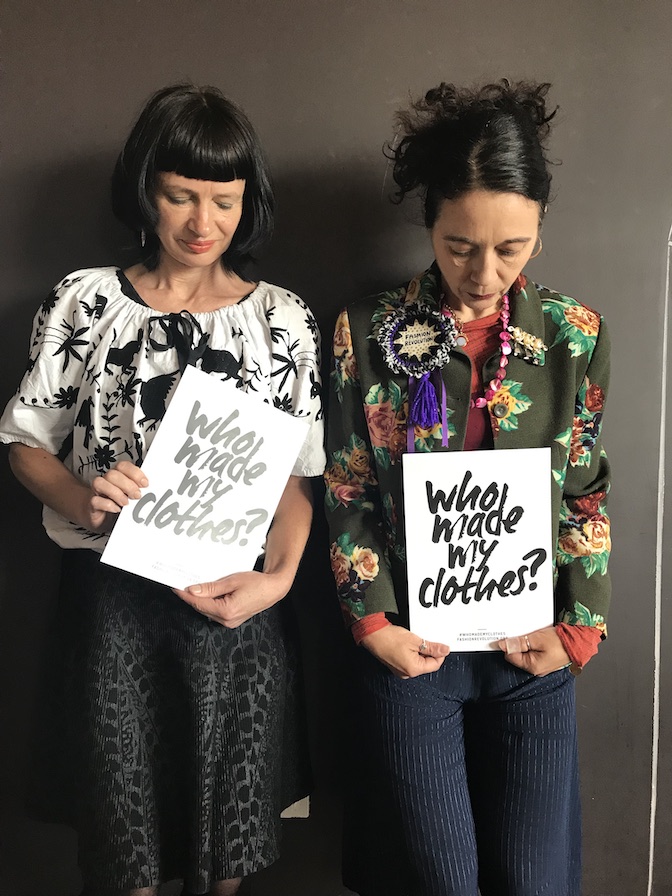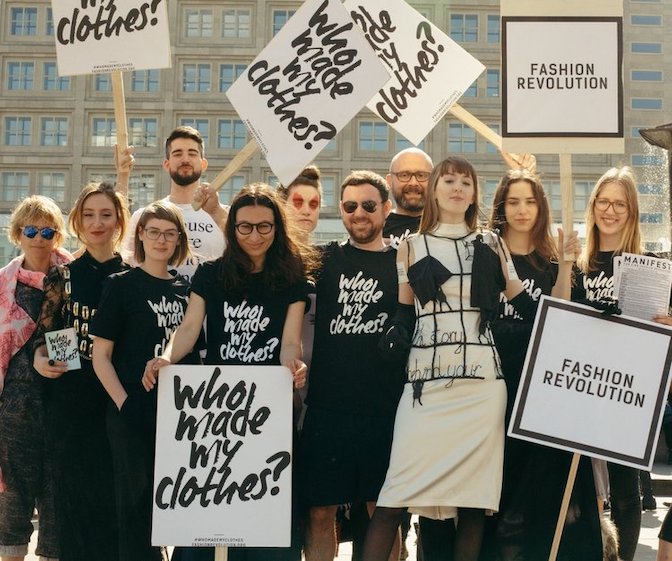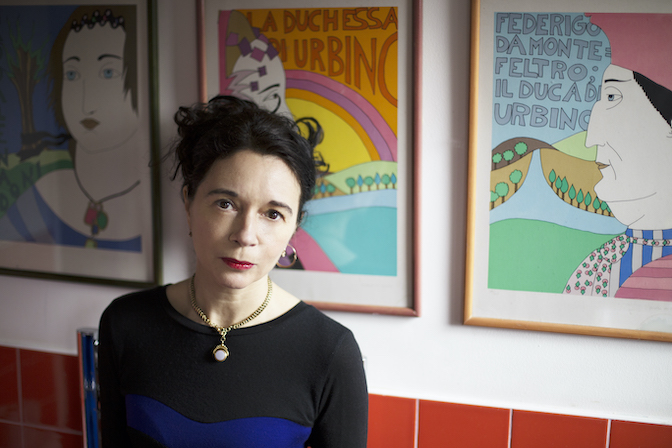Fashion + Design > Fashion
November 27, 2019
In conversation with Fashion Revolution co-founder Orsola de Castro
Susanne Barta
Am 24. April 2013 stürzte die Bekleidungsfabrik Rana Plaza in Bangladesch ein. Mehr als 1.100 Menschen starben, über 2.500 wurden verletzt. Es war der viertgrößte Industrieunfall der Geschichte. Die Opfer waren vor allem junge Frauen, die gerade dabei waren, Kleidung für bekannte globale Fashion Brands herzustellen. Rana Plaza war der Auslöser für die Gründung von Fashion Revolution. Die Plattform ist in über 60 Ländern aktiv, ihre Mission ist es, die Art und Weise, wie Bekleidung hergestellt wird, radikal zu verändern. Durch Sensibilisierung der Öffentlichkeit, investigative Recherchen, Informationskampagnen, Lobbyarbeit bei Regierungen und Unternehmen und weltweite Veranstaltungen. Eine der beiden Gründerinnen von Fashion Revolution ist Orsola de Castro.
Orsola, Fashion Revolution was founded 2013 after Rana Plaza. Has anything fundamentally changed in the fashion industry in the years since then?
There’s been some monumental change and not enough change at the same time. So it’s really very difficult. We very much believe that Fashion Revolution has incremented the level of conversation, particularly around transparency and we have seen an increase in brands publishing their supply chain. If you download our fashion transparency index you will have all of the numbers. We still are not happy at the level of unionisation of supply chain workers, there has to be a lot more work done. Brands such as H&M have been promising a living wage for all garment workers but that hasn’t materialized. We actually suggest beyond living wage to ensure that all supply chain workers have the opportunity to form unions. That hasn’t increased that much but awareness around that topic has increased hugely. So we really do believe that citizens are applying more pressure now than ever before and that the conversation is more in the open now than ever before. There is a general understanding and a widespread awareness that the fashion industry is both environmentally and socially toxic, polluting and exploitative and we know that our #whomademyclothes has had a massive reach. In April 2018 it was of 275 million people and it increases. So we do know citizens are ready to start this conversation. Not enough but an awful lot.
Global Fast Fashion Brands are churning out more clothes than the planet can handle. And our current level of clothing consumption is highly unsustainable. What can consumers do about that?
Consuming means to expand by use. That would be a first step. The truth is that fashion is very individual and we all wear clothes differently. So at the end of the day it’s going to be an individual choice that will dictate your actions. My advise is always to shop in your own wardrobe, to look at your wardrobe for inspiration, to understand how can you make better choices, how could you buy better, buy less, how could you mend, repair, swap, share, all of the things actually one can do rather than rushing to buy the next thing. Of course Fast Fashion is closely linked to overproduction but Luxury Fashion is not slow. We are talking about enormous volumes of clothing, enormous volumes of accessories. I wouldn’t want this interview to talk about Fast Fashion, because for me the impact of the fashion industry is not sectored into Luxury or High Street. It is the entirety of the fashion industry that needs to be called into question.
Sustainability is a complex concept, and there isn’t one universally agreed upon definition. What is sustainability to you?
Sustainability is a very simple concept and there is a very clear description to what it is in the dictionary. The problem is that we are using the word wrong. Just as we are using the word circularity wrong. This is what happens when people sensationalize and turn something very simple into a buzz word. Sustainable means that it has to be able to continue without harming. Very simple. But we need to understand that when it comes to the fashion industry nothing is simple. Because the fashion industry has a very complex supply chain. We need to talk about environmental sustainability as we need to talk about social ethics. If we shove it all into one word sustainble then of course it’s not going to make sense because we are talking about very specific systems and processes, a multitude of them need to be put into place in order for the industry to become more sustainable. So sustainable fashion really doesn’t exist at this point in time, it’s a word that should not be used because there is no sustainable fashion. There is the concept of imbedding sustainable practises within design and production, there is the concept of being transparent and ethic when it comes to your supply chain. We need to break up the word because it really is about multiple systems, multiple things we all need to do in order to push for a more sustainable future.

Today’s trends are tomorrow’s trash, with our clothes made cheaply and disposed of quickly. Do we have to change our mentality, our lifestyle? And can eco be the new sexy like some proclaim?
Absolutely, although I would never describe it as sexy. Personally I don’t like the word sexy when we are talking about environmental degradation and human exploitation. I think we need to make eco relevant and to make it the new avantgarde. The point is that sustainability has been trending for billions of years, we wouldn’t be alive without it. What we need to do is to ensure that trends of the future respect the future that we want to see rather than this decadence of going against everything that makes sense.
How do you see the role of influencers?
I am completely uninterested in anything that has to do with celebrity culture and influencers but I understand that we sort of need to use them. I am very proud that Fashion Revolution is a bottom up movement and influencers are just now beginning to become interested and taking part in their own way which of course we welcome. But we’ve not actively seeked them. Not because we don’t believe that they don’t influence, we are aware of the fact that they influence, but we don’t really trust the fact that they might talk about one thing one day and then go back to buying, consuming, advertising. Consistency comes with commitment.

What do you plan for the future of Fashion Revolution?
To keep on going. We are the biggest fashion advocacy movement in the world, we are restructuring in order to accommodate all of our country coordinators and their wonderful initiatives. One step at a time. There really is a lot of work to do.
Jedes Jahr im April ruft Fashion Revolution zur weltweiten Kampagne #whomademyclothes auf. Mitmachen kann jede und jeder. Auch schon vorher. Und noch ein Tipp: Ich habe im Sommer den Online-Kurs „Fashion’s Future: The Sustainable Development Goals“ gemacht, den Fashion Revolution gemeinsam mit Future Learn durchführt. Sehr zu empfehlen.
Fotos: (1) Orsola de Castro, photographer: Tamzin Haughton; (2) FR founders Carry Somers and Orsola de Castro (c) Fashion Revolution; (3) FR Berlin, copyright: Fashion Revolution


















Comments